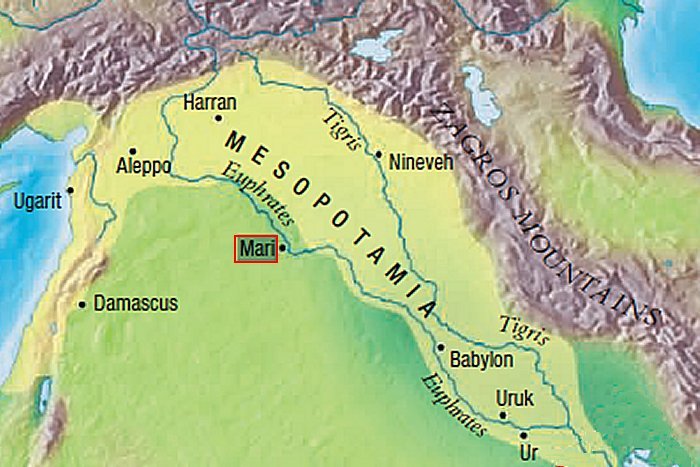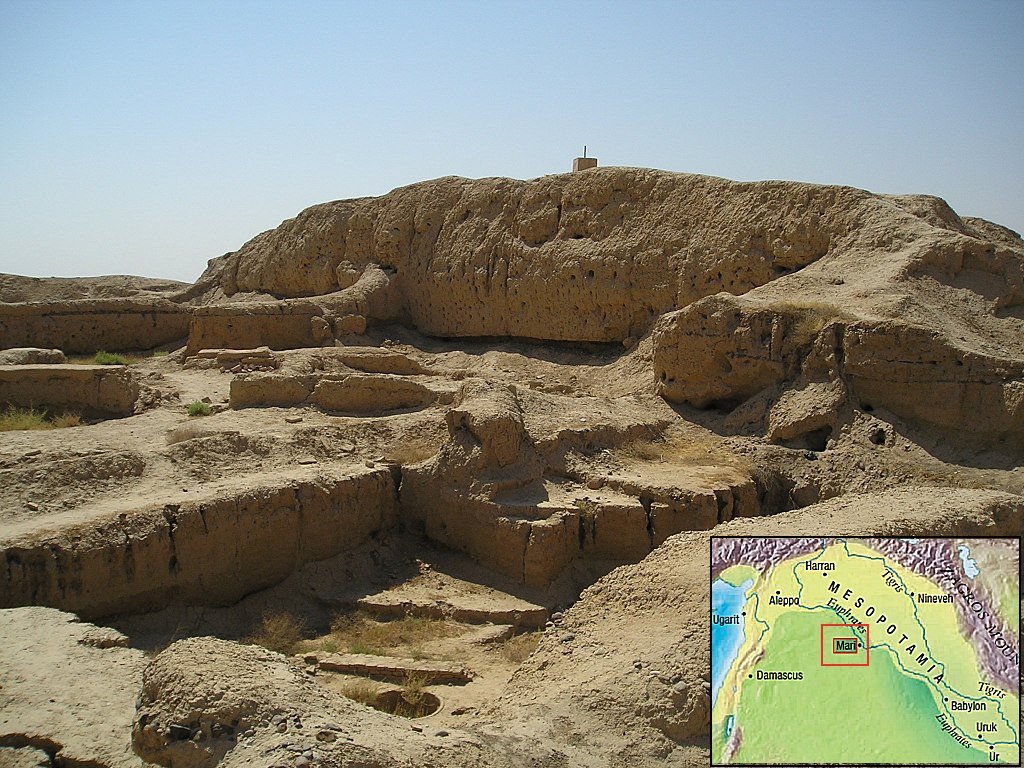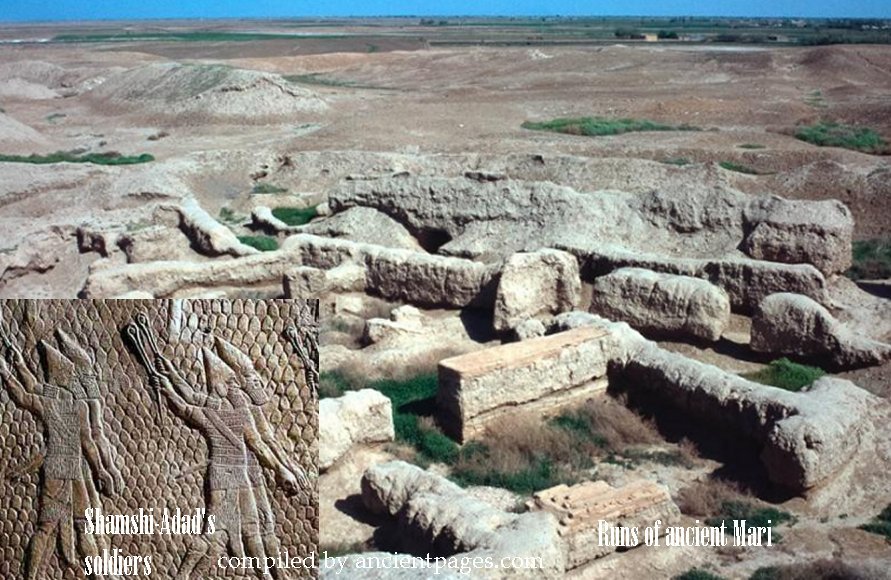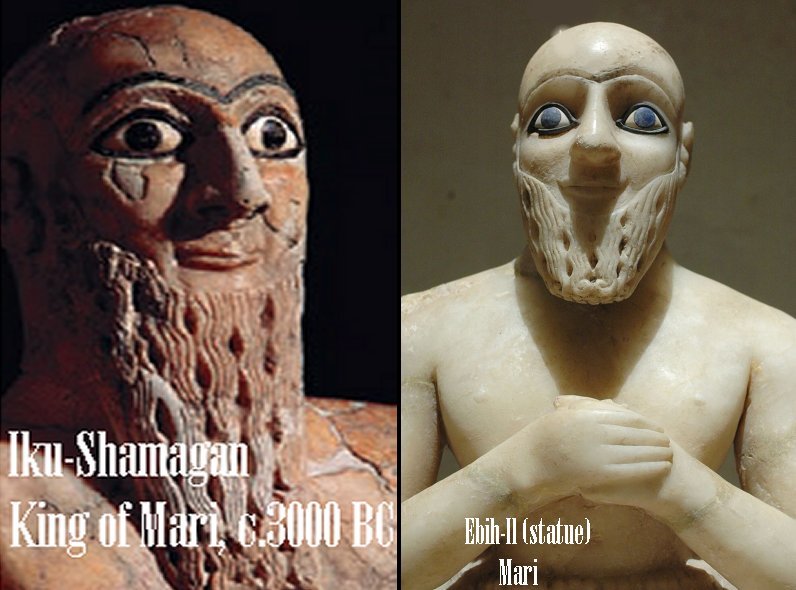Lost Kingdom Of Mari – Once Important Commercial And Political Center Of Mesopotamia
A. Sutherland - AncientPages.com - The history of Mari is rather obscure, but it is known that it was an ancient kingdom and an important political and commercial center on the western bank of the Euphrates in modern Syria close to the Iraqi frontier.
Mari became prosperous due to its beneficial geographical location on the northern trading route between Syria and Mesopotamia, in close vicinity of Mediterranean Sea, Assyrian area to the north-east and Babylonia to the south-east.
Main sources of our knowledge about Mari, dated to about 3,000 BC, come from Sumerian references and the Ebla tablets, which mention that the relations between ancient city of Ebla and Mari were rather close but not always – peaceful.
Mari was occupied by the Akkadians, Sumerians and at the turn of the 19th / 18th century BC by the Amorites, a powerful Semitic-speaking people from Syria who also occupied large parts of southern Mesopotamia from the 21st century BC to the end of the 17th century BC.
About 1740 BC, the prosperous Mari was captured by an Amorite, Shamshi-Adad I (c.1809 BC – c. 1776 BC) who was a successful conqueror of many other lands. The kingdom was independent between c. 1800 and 1750 BC and about 1700 BC it was destroyed by King Hammurabi, who concealed for future generations, a vast cuneiform archive, which was not discovered until 1933.
Some sources, however, say that Hammurabi took the city without fight.
A dynasty of Mari is mentioned in the Sumerian King List as the 10th dynasty after the Flood, and it was approximately contemporary with the time of the First Dynasty of Ur.
Ruins of ziggurat n ancient city of Mari.
The ruins of Mari were discovered accidentally in 1933, when Bedouin tribesmen were searching through a mound called Tell Hariri, Syria for a gravestone that would be used for a recently deceased tribesman. The first artifact, they noticed was a headless statue from the times of Mari.
Three Important Deities Of The City
It is believed that the city was named after Mer (Mera), an ancient storm deity of northern Mesopotamia and Syria, who was also the patron of the city. It was his home and he was one of the three important patron deities of Mari.
Another deity was Addu/Adad, the Storm god depicted as the brave and fearsome warrior-god responsible for continuous victories and all successes of the kings of Mari. While in Mari, his worshippers emphasized his and destructive character, in Sumerian beliefs, he was Iškur (Ishkur) with much more peaceful character.
It is said that Iškur/Adad's father was the sky-god Anu, but in Sumerian literature, Iškur is rather the son of Enlil. Iškur/Adad was also associated with divination and justice.
The third deity, Dagan (commonly worshipped in the late 3000 BC/2000 BC) was the city’s most important god worshipped across the entire Middle Euphrates region.
Even if there are no significant mythical references to the three most important gods of Mari (Ilu-Mer, Adad, and Dagan), it has been suggested that their role was of great importance not only in Mari but also across the entire Mesopotamia.
Thousands Of Cuneiform Tablets And Palace of Zimri-Lim, The Last Ruler
The ancient Mari has been excavated in several archaeological campaigns, which revealed more than 25,000 clay tablets in Akkadian language written in cuneiform and artifacts, now stored in the Louvre, Paris and Museums of Damascus and Aleppo, Syria. The tablets provide a detailed account of the Assyrian Empire in the late 18th century BC.
However, the most impressive of all findings in the area of Mari, are the remains of a palace that belonged to the last ruler of Mari, Zimri-Lim, who ruled c. 1775-1761 BC and it was the time of the great prosperity of Mari.
Excavations revealed the remains of a 275 room palace covering 2.5 hectares, with a rich library (or state archive) containing between 17,000 -20,000 (or 25,000) tablets inscribed in Akkadian and cuneiform.
Zimri-Lim’s palace is considered the most remarkable and best-preserved of the Early Bronze Age palaces discovered in the region, despite the fact, that the palace was intentionally destroyed. It was built erected mainly of dried brick and clay.
The rooms were used for commercial and religious activities, public ceremonies, and the private life of Zimri-Lim, who ruled Mari for about thirteen years, kept extensive diplomatic contacts with Hammurabi and even lent his troops to Hammurabi's military campaigns.
During the Zimri-Lim era, the inhabitants of Mari represented mainly Amorite people but also included the Akkadians. The Amorite language dominated the kingdom and Akkadian was the language of writing.
Written by – A. Sutherland AncientPages.com Staff Writer
Copyright © AncientPages.com All rights reserved. This material may not be published, broadcast, rewritten or redistributed in whole or part without the express written permission of AncientPages.com
Expand for referencesReferences:
The Cambridge Ancient History
E. S. Edwards, C. J. Gadd, N. G. L. Hammond
Ravinell A. Green W. The Storm-god in the Ancient Near East
More From Ancient Pages
-
 Human Activities In The Year 1300 Impacted Earth’s Atmosphere More Than Previously Known
Archaeology | Oct 9, 2021
Human Activities In The Year 1300 Impacted Earth’s Atmosphere More Than Previously Known
Archaeology | Oct 9, 2021 -
 Many Samurai Had Swords With Secret Crucifixes And Hidden Christian Symbols To Avoid Persecution
Ancient History Facts | Jan 10, 2017
Many Samurai Had Swords With Secret Crucifixes And Hidden Christian Symbols To Avoid Persecution
Ancient History Facts | Jan 10, 2017 -
 How Did Indus Civilization Manage To Resist Climate Change?
Archaeology | Feb 22, 2017
How Did Indus Civilization Manage To Resist Climate Change?
Archaeology | Feb 22, 2017 -
 Mysterious Maya Snake Kings And Their Powerful Kingdom In The Jungle Reveal More Ancient Secrets
Civilizations | Apr 23, 2018
Mysterious Maya Snake Kings And Their Powerful Kingdom In The Jungle Reveal More Ancient Secrets
Civilizations | Apr 23, 2018 -
 What Is The History Of Pancakes?
Ancient History Facts | Mar 7, 2024
What Is The History Of Pancakes?
Ancient History Facts | Mar 7, 2024 -
 Ancient Oil Lamp Shop Discovered In Aizanoi, The Second Ephesus
Archaeology | Nov 22, 2021
Ancient Oil Lamp Shop Discovered In Aizanoi, The Second Ephesus
Archaeology | Nov 22, 2021 -
 Mystery Of The Hidden Wooden Hieroglyphic Tablets And The Unknown White Bearded Men – The Vatican – Part 1
Featured Stories | Mar 2, 2021
Mystery Of The Hidden Wooden Hieroglyphic Tablets And The Unknown White Bearded Men – The Vatican – Part 1
Featured Stories | Mar 2, 2021 -
 Will Archaeologists Uncover The Secrets Of A Rare Viking Ship Grave In Norway Before It’s Destroyed?
Archaeology | Nov 14, 2020
Will Archaeologists Uncover The Secrets Of A Rare Viking Ship Grave In Norway Before It’s Destroyed?
Archaeology | Nov 14, 2020 -
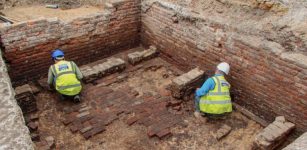 London’s Oldest Theater Red Lion Discovered Beneath Whitechapel
Archaeology | Jun 10, 2020
London’s Oldest Theater Red Lion Discovered Beneath Whitechapel
Archaeology | Jun 10, 2020 -
 On This Day In History: ‘Edict Of Nantes’ About Freedom Of Religion Issued By Henry IV – On Apr 13, 1598
News | Apr 13, 2017
On This Day In History: ‘Edict Of Nantes’ About Freedom Of Religion Issued By Henry IV – On Apr 13, 1598
News | Apr 13, 2017 -
 Tarkhan Dress – The World’s Oldest Woven Garment
Archaeology | Feb 24, 2016
Tarkhan Dress – The World’s Oldest Woven Garment
Archaeology | Feb 24, 2016 -
 Överhogdal Tapestry: Amazingly Well-Preserved Ancient Textiles With Norse And Christian Motifs
Artifacts | Apr 26, 2019
Överhogdal Tapestry: Amazingly Well-Preserved Ancient Textiles With Norse And Christian Motifs
Artifacts | Apr 26, 2019 -
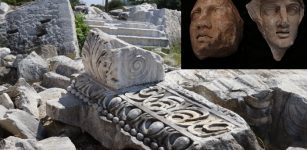 Once Impressive Temple Of Hadrian In City Of Cyzicus Will Be Restored Soon
Archaeology | Sep 7, 2020
Once Impressive Temple Of Hadrian In City Of Cyzicus Will Be Restored Soon
Archaeology | Sep 7, 2020 -
 Bellerophon: Great Hero Of Homer’s Iliad Who Was Punished By Gods For His Pride And Arrogance
Featured Stories | Jul 13, 2021
Bellerophon: Great Hero Of Homer’s Iliad Who Was Punished By Gods For His Pride And Arrogance
Featured Stories | Jul 13, 2021 -
 On This Day In History: Fascinating Prague Astronomical Clock Mentioned For The First Time – On Oct 9, 1410
News | Oct 9, 2016
On This Day In History: Fascinating Prague Astronomical Clock Mentioned For The First Time – On Oct 9, 1410
News | Oct 9, 2016 -
 Huge Megalithic 7,000-Year-Old Site Dolmen Of Guadalperal Emerges From Dry Lake In Spain
Archaeology | Aug 22, 2022
Huge Megalithic 7,000-Year-Old Site Dolmen Of Guadalperal Emerges From Dry Lake In Spain
Archaeology | Aug 22, 2022 -
 On This Day In History: ‘Devil’s Footprints’ Appeared In Devon, England – Feb 8/9, 1855
News | Feb 8, 2017
On This Day In History: ‘Devil’s Footprints’ Appeared In Devon, England – Feb 8/9, 1855
News | Feb 8, 2017 -
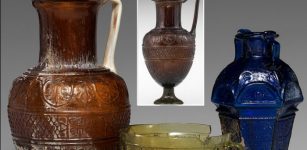 Ennion: Ancient Master Of Glassblowing And His Legacy
Artifacts | Dec 7, 2020
Ennion: Ancient Master Of Glassblowing And His Legacy
Artifacts | Dec 7, 2020 -
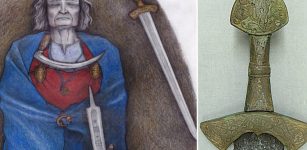 Suontaka Weapon Grave: New Light On Strong Female Leaders And Warriors Of Late Iron Age Finland
Archaeology | Jul 29, 2021
Suontaka Weapon Grave: New Light On Strong Female Leaders And Warriors Of Late Iron Age Finland
Archaeology | Jul 29, 2021 -
 Hidden Prophecies Inside The Great Pyramid Of Giza Discovered By Scientists
Ancient Mysteries | Jun 21, 2017
Hidden Prophecies Inside The Great Pyramid Of Giza Discovered By Scientists
Ancient Mysteries | Jun 21, 2017

